A Decade of Discovery: Felix Kunze’s Iconic Explorers Club Portraits
![]()
For over a century, The Explorers Club Annual Dinner has stood as a prestigious gathering, celebrating those who relentlessly push the boundaries of human endeavor. For the past ten years, photographer Felix Kunze has been its visual chronicler, capturing portraits of attendees with a distinctively simple, yet timelessly classy style. This remarkable long-term personal project, drawn from his own inspiration, seeks to illuminate the world-changing accomplishments of these explorers and scientists.

To Felix Kunze, The Explorers Club is exactly what its name implies.
“The Explorers Club, literally, is a club for explorers,” he states simply. “While members of the past like Sir Edmund Hillary and Neil Armstrong showcased the traditional definition of ‘explorer’, today’s explorers are also pushing the boundaries of science. They are the ones re-writing what we know about history. They are the few brave humans willing to undertake the dangers of exploration in space and the deep sea.”
This year, marking the 121st iteration of the historic dinner, Kunze was once again present, documenting the faces behind the accomplishments and discoveries.

A desire to honor these individuals and reveal the human element behind their remarkable achievements fuels Kunze’s decade-long dedication to photographing portraits at the Explorers Club Annual Dinner (ECAD). He believes his photography can bridge a critical gap by putting a recognizable, every day face to their groundbreaking work.
“When we see a headline about the discovery of a new tomb in Egypt, or a breakthrough scientific study, it’s usually just an anonymous headline that isn’t attached to the person who’s actually done the work, a person who actually wants to make the world a better place,” he explains. “My portraits strive to make these connections visible.”
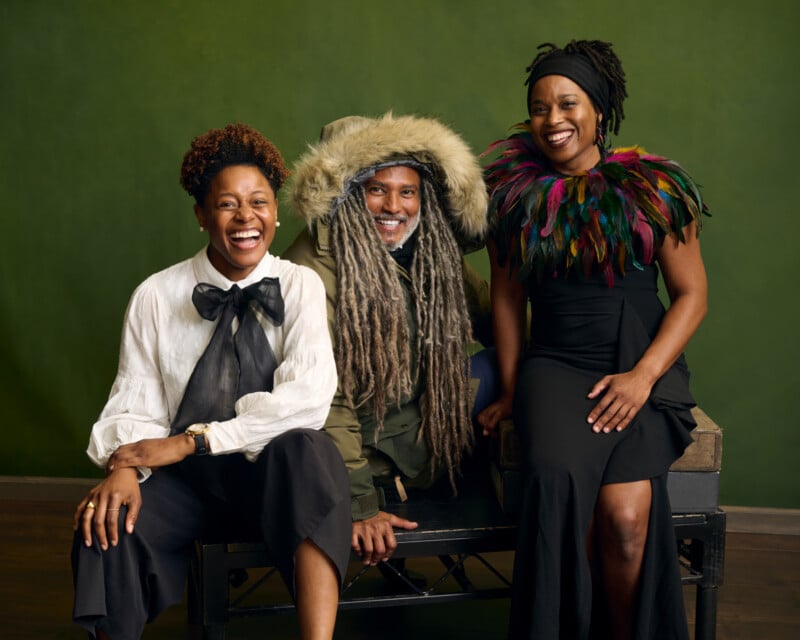
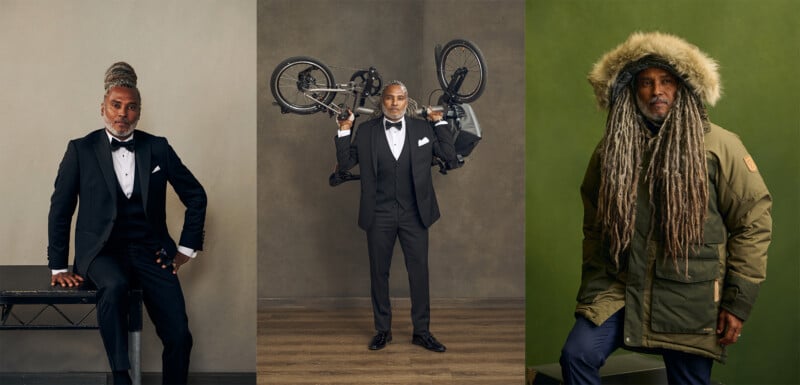
More than just a pop-up photo studio, Kunze’s portrait stage at the ECAD becomes a platform. “Taking high-quality portraits of these incredible people is my way of giving back,” he says. “I hope my portraits can contribute to fostering greater appreciation and trust for the important work the members of The Explorers Club do.”
Spark of an Idea: The Making of Kunze’s Iconic Explorer Portraits
Every ambitious project starts with a spark. For Kunze, that moment was in 2014 after photographing an event at The Explorers Club. “I was fascinated by the people I was meeting,” Kunze explains. “That night, I had the inspiration to create a portrait project highlighting these explorers, similar to what Mark Seliger does at the Oscars. The concept was simple yet, for me, it was powerful.”
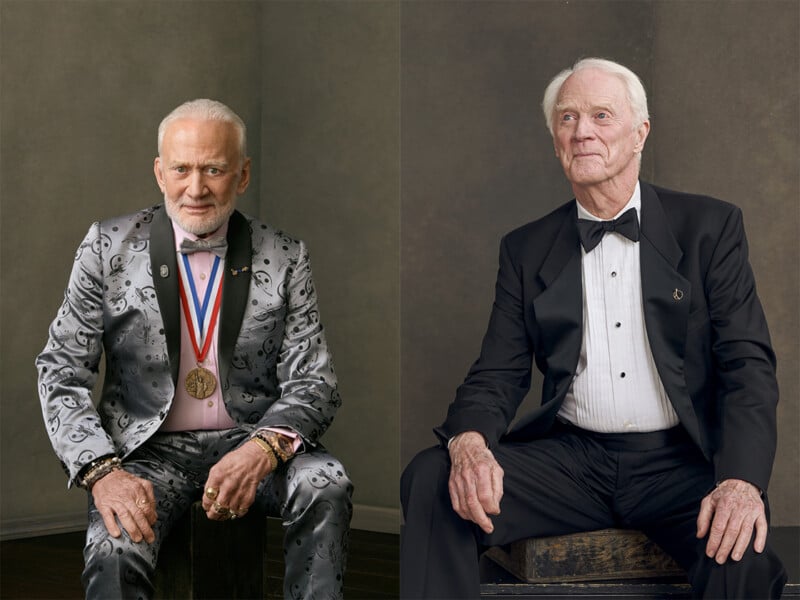
Getting the project off the ground required some persuasion and lucky timing.
“I had convinced the person hosting the Explorers Club Annual Dinner that year to give me just a small corner at the Museum of Natural History,” Kunze recounts. “The Explorers Club, having never had a professional portrait studio at an event, was understandably cautious. It was just one of countless proposals the club leadership gets. Even my offer to do it at no cost to them didn’t grant an immediate yes. However, I was ambitious and I had told the organizers, ‘Just give me the space and I’ll show you that you made the right decision.’ They did, and the rest is history. Ten years on, I am still setting up my studio at the ECAD.”
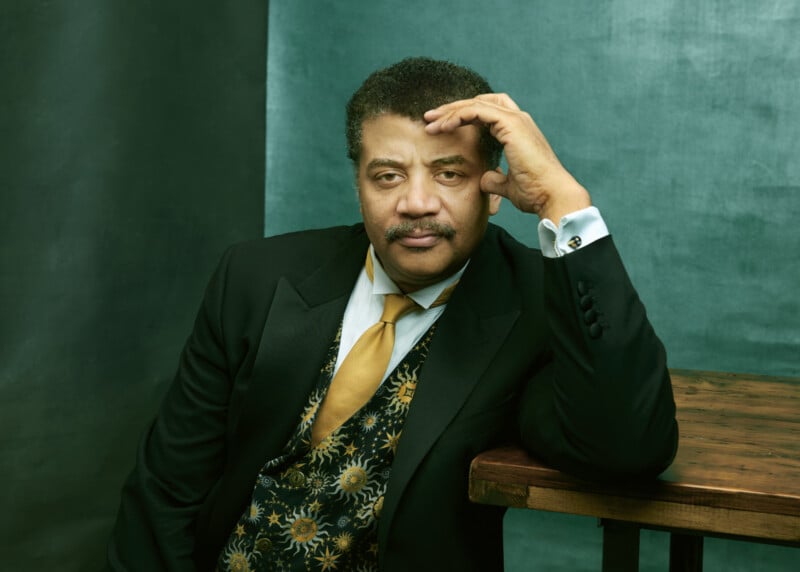
That inaugural year, Kunze photographed whoever was willing, including guest of honor Neil deGrasse Tyson. His desire to photograph Explorers Club members was driven by more than just a creative whim. It was an expression of his respect for the scientific community.
“I was passionate about science and exploration before I started this project, however, that passion has grown immensely since I began ten years ago,” Kunze says. “I love connecting the viewer to these accomplishments that are done by real people. My desire to humanize science and exploration became the bedrock of one of my favorite and most rewarding personal projects.”
The ‘Explorer Feel’: Kunze’s Blueprint for Timeless Portraits
At the core of Kunze’s decade-long project at the Explorers Club Annual Dinner is a distinct aesthetic that he meticulously cultivates: the explorer feel.
“From the first year, I wanted a classy, timeless, simple look,” Kunze explains. “I want to create a portrait that could, in theory, have been taken a hundred years ago. And hopefully, in a hundred years these portraits will still look relevant.” His vision is inspired from historical portraiture of explorers. “In those old photos, the explorers looked distinguished, yet strong. Even if you didn’t know why they were important, you just knew they were. That sense of strength and importance is at the core of my creative vision for the ECAD portraits.”
![]()
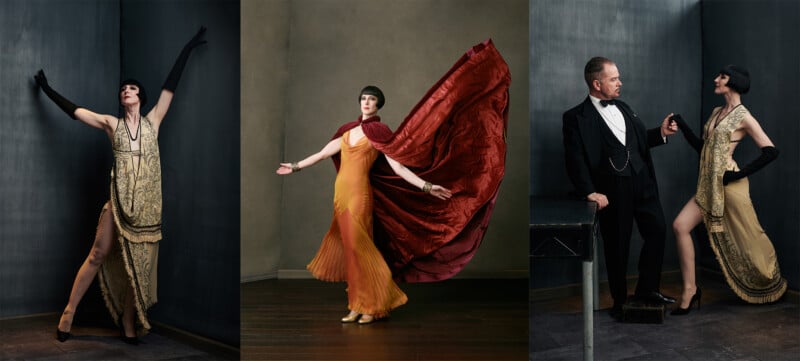
To achieve this, Kunze relies on carefully chosen elements. His Oliphant Studio backdrops, renowned for their painterly quality, are a cornerstone.
“Their backdrops have this beautiful texture and depth,” he states. Props, like his collection of worn apple boxes, are used sparingly and with intention. “Explorers aren’t pristine in the field. Their gear is used, it’s beaten up. It tells a story of experience. Even though their clothes might be pristine at the event, the use of worn-in props adds to the story of their day to day lives.” His Elinchrom lighting setup is usually simple.
“The most important thing is the face and the eyes. I believe the light needs to serve the subject, not overpower them.”
![]()
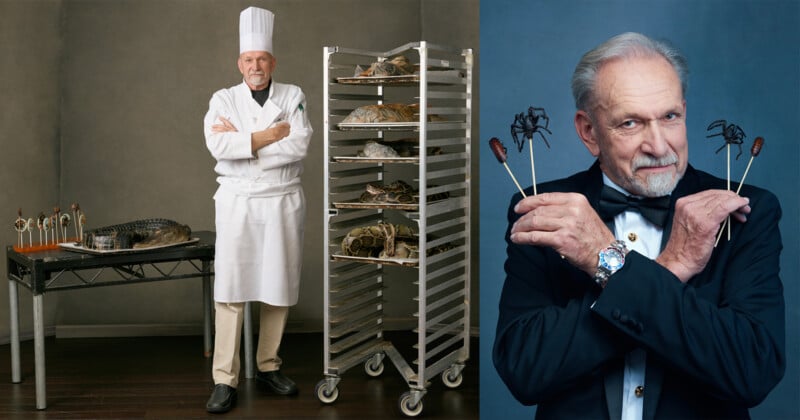

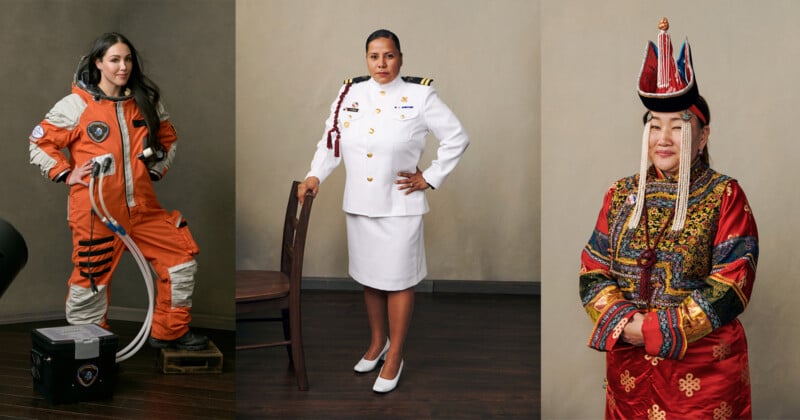
Kunze’s commitment to this aesthetic has been a deliberate constant in this project.
“I am heavily inspired by photographic legends like Richard Avedon, whose long-term projects demonstrated the power of a consistent approach,” he describes. “That body of work is so strong because he stuck with it, using the same backdrop and the same lighting, for years. That really resonated with me. This consistency isn’t limiting me. It’s creating a cohesive, recognizable body of work where the subjects shine, which has always been my goal with this project.”
While the visual style remains anchored, Kunze acknowledges the project’s scope has grown over the decade.
“The vision to create these timeless portraits hasn’t changed, but the scale and the number of people who want to be a part of it certainly has.” More significantly, the annual event has deepened his appreciation for the evolving nature of exploration. “The definition of explorer has changed a lot since I began this project,” he concludes. “I am honored that, year after year, I get to highlight the diverse and ever-expanding definition of what it means to be an explorer in the modern age.”
Chaos and Class: Kunze’s High-Speed Portraiture at ECAD
Photographing attendees at The Explorers Club Annual Dinner is far removed from a typical controlled studio environment. For Kunze and his team, it’s an annual dive into a high-energy, high-stakes setting.
“It’s very busy, and we have very limited time with people,” Kunze states. “We have four or five hours, and in that time, a couple of hundred people will come. It feels like a pressure cooker, so efficiency and focus are critical for us to pull this off.”
![]()
Kunze’s primary concern is ensuring an organized and professional operation while capturing compelling images of everyone on their list. “We are trying to make everything easy for the subjects, while also making sure that we are not missing anybody important, on top of still getting great shots,” he describes. “It sounds easy. However, it is far from it.”
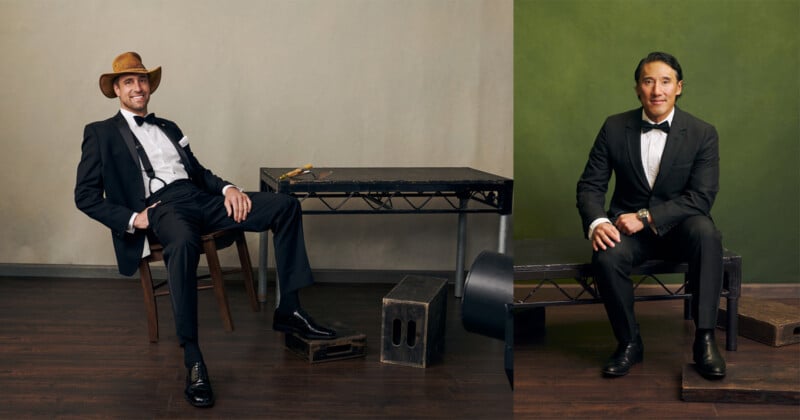
![]()
With only moments for each portrait, Kunze’s interaction with subjects is necessarily swift and intuitive. His goal isn’t to extensively direct the scene, but to capture an authentic moment.
“I try to give as little instruction as possible, because that leads to an unnatural portrait,” he explains. “I want to photograph who they are. I see them pose in the way that feels natural to them, I take a few quick portraits and then I make very small adjustments. Generally, people are there because they want to be photographed, so their willingness helps, but adapting to a wide spectrum of personalities, from shy to boisterous, is important to capturing organic expressions.”
![]()
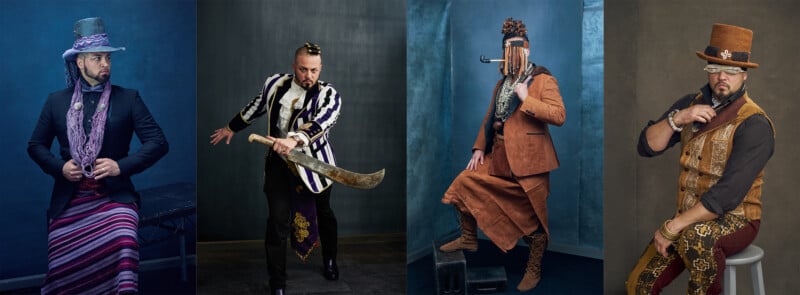
The logistical demands of the ECAD shoot add another layer of complexity for Kunze and his team.
“It’s not just about capturing images but also managing scheduling, ensuring subjects arrive, and executing rapid setup and teardown,” he explains. This demanding environment necessitates his well-honed technical setup, centered around his Elinchrom lighting, which must be both effective and adaptable. “This project has allowed me to learn so much about how to create ‘Lighting for Everyone.’ If I wasn’t able to apply this lighting style that works for the diverse attendees of the ECAD, there is no way we would be able to photograph as many people as we do. And every year, we get a little better at it.”
Iconic Explorers: Kunze’s Most Memorable ECAD Portraits
Over his decade at The Explorers Club Annual Dinner, Kunze has photographed a remarkable collection of modern-day adventurers and scientific pioneers. Each brief session offers a unique story. “I had a pretty surreal experience photographing eight living Apollo astronauts, including Buzz Aldrin and Michael Collins,” he says. “To have that many guys that have walked on the moon in one room, that’s not going to happen again. These are the people that have shaped humanity by accomplishing one of the most incredible feats in all of mankind.”
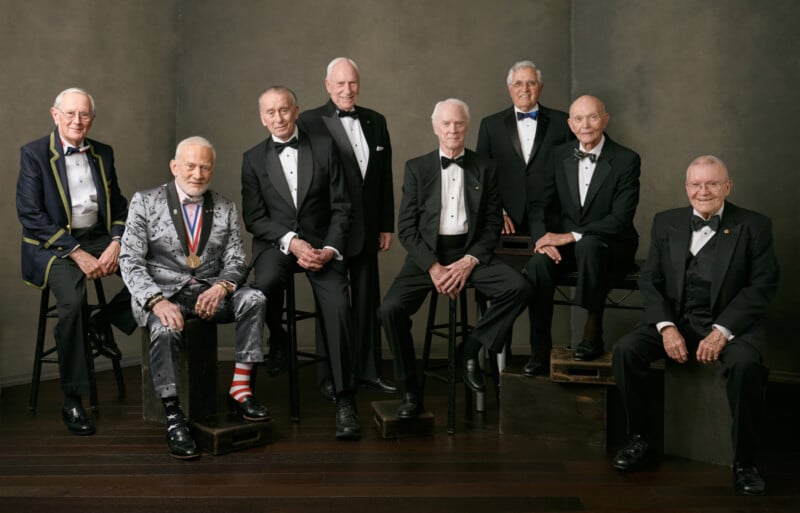
Unexpected encounters with quiet heroes also inspire Kunze. He vividly recalls photographing Rick Stanton, one of the British cave divers pivotal in the 2018 Thai cave rescue.
“He was very unassuming, just a normal, lovely guy,” Kunze shares. “However, I was standing there thinking, ‘This guy saved those kids by risking his life in an incredibly dangerous mission that few people on earth could have completed.’ There’s a weight to that, and you try to capture that sense of grounded strength and resilience without any forced drama. For me, it’s about honoring the gravity of their achievements through the stillness of a portrait.”
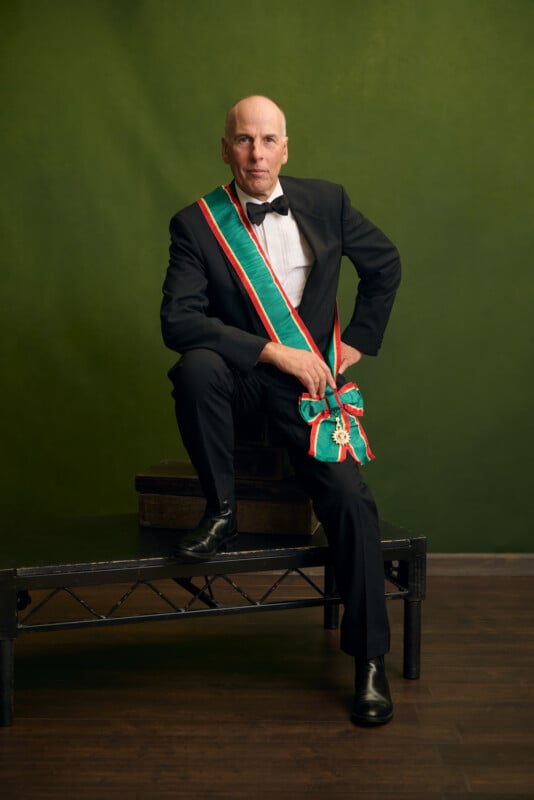
Kunze finds the portraits tell a deeper story when explorers integrate elements of their fieldwork into their attire, something he increasingly encourages.
“I started focusing on getting people to bring more props. Not only would it make for good photographs, but it would also tell their story,” he explains. This year showcased striking examples: “Justin Fornal, whose work highlights vanishing cultural tradition, appeared in a full headdress and body armor meticulously created from a 14-foot Nile Crocodile, an homage to the Egyptian god Sobek and 3rd century Roman crocodile skin armor. I photographed Simon Wong, fresh from carrying Explorers Club Flag #240 on his ‘Skiing for Science’ expedition investigating microplastic pollution across the frozen Northwest Passage, with the very skis that carried him over 400km. Ben Mirin, an ethnobiologist, came with his parabolic microphone that he uses to record birdsongs, while boat captain and veteran advocate Breezy Grenier donned her volunteer firefighter gear over a gown that was crafted from marine debris, symbolizing her vow to protect the oceans.”
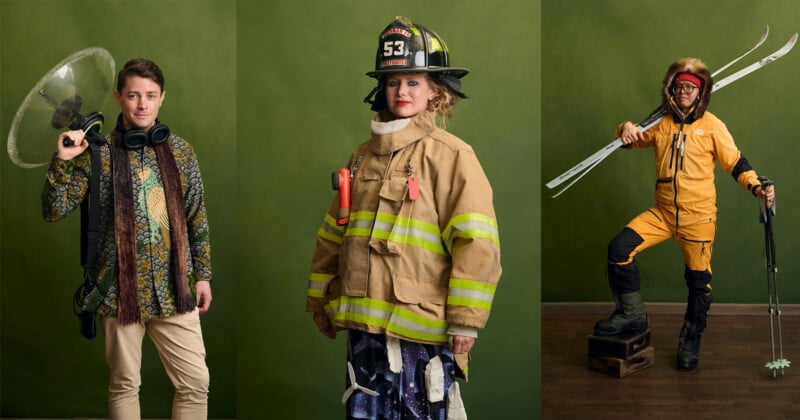
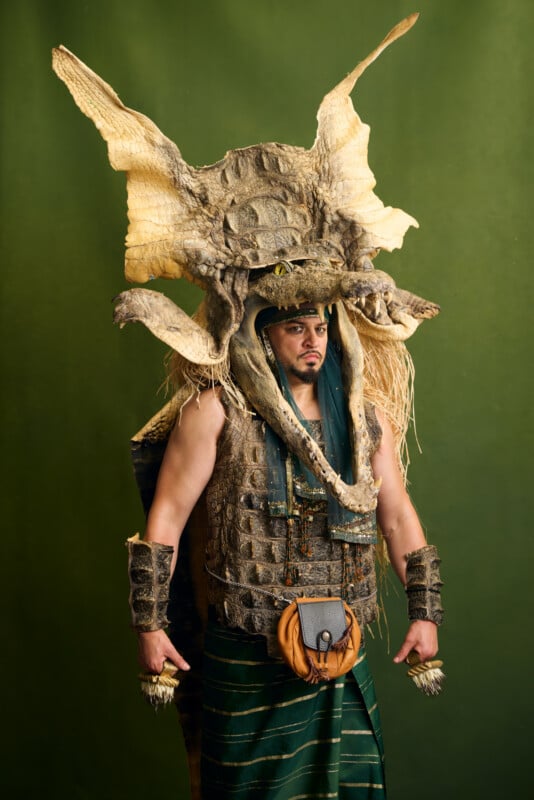
“While I love all of the portraits that I capture at ECAD, the ones with the Explorers tools of the trade are usually some of my favorites,” Kunze concludes. “These personal items, he feels, highlight the explorers’ dedication and the unique spirit driving their contributions.“Their personal items and humble personalities aren’t just details; they are extensions of the explorers’ dedication and the unique spirit driving their remarkable contributions to our understanding of the world.”
Beyond the Image: Kunze on Portraiture’s Power for Explorers
For Kunze, his annual project at The Explorers Club Annual Dinner is driven by a core philosophy deeper than just capturing striking images. “The vision for The Explorers Club project has always been to elevate Explorers standing in society through photographs,” Kunze states. “I want to combat the distrust of scientists that’s been an unfortunate part of popular culture in some circles. I want my work to humanize the forces behind groundbreaking discoveries. This project is a way of giving back to the scientific community that I am passionate about and showing the viewer that these accomplishments are done by real people. I want to put a face to the names often mentioned, but overlooked, in scientific studies or news articles.”
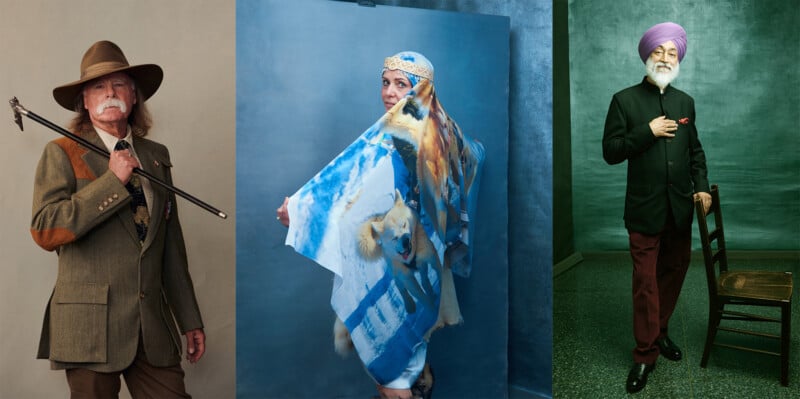
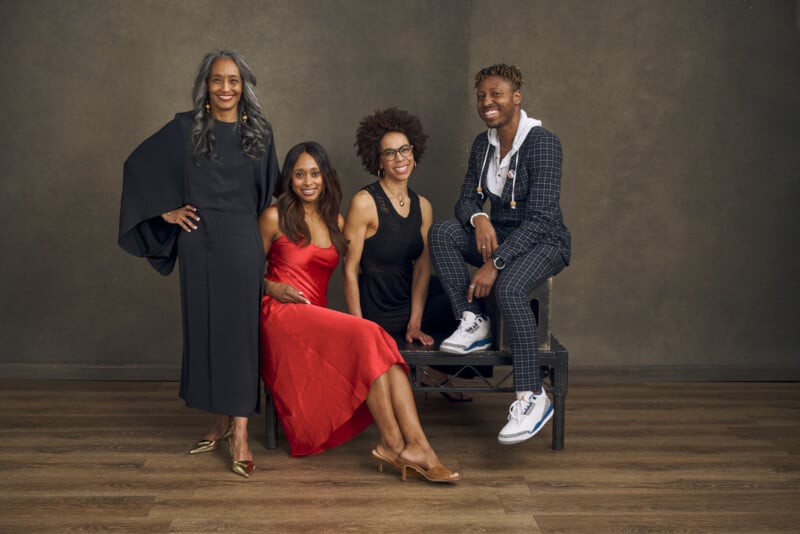
This desire is more than artistic. Kunze believes his portraits help explorers and scientists foster connections that can lead to tangible support for their vital work. “When the public sees the person behind the research, it builds understanding and trust,” he observes. “For instance, Johnny Waters is a paleontologist who is running the project on the Devonian mass extinction. He told me that my portraits of their team, and the images from when I joined them on an expedition in Mongolia, have opened more doors for them than simple text-filled communications could do because the photos tell a story that donors can see, which helps get them funding. For me, that makes all of the stressful chaos of photographing at the ECAD worth the massive effort.”
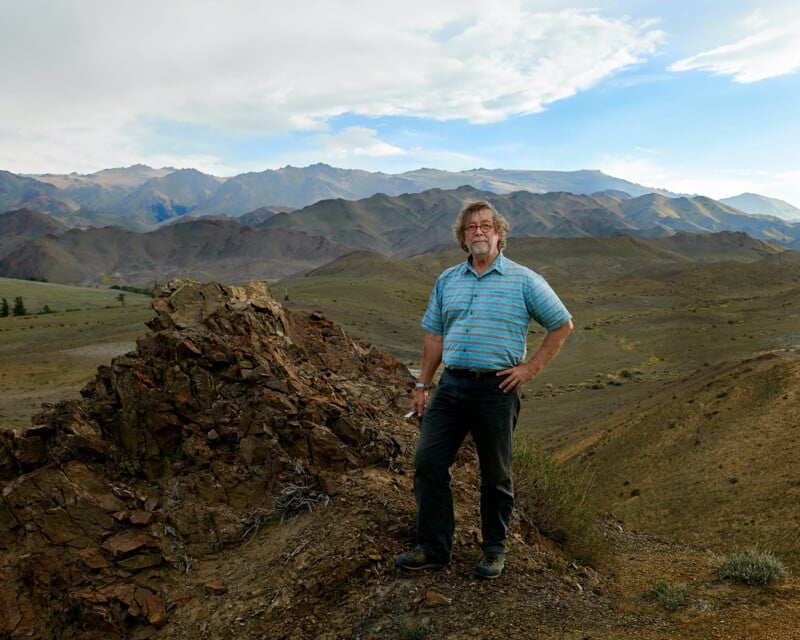
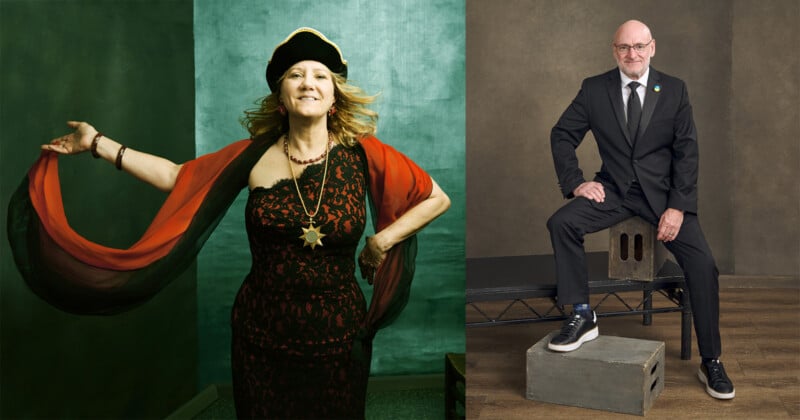
It’s this potential for meaningful impact that continues Kunze’s dedication. He feels strongly that his work can contribute positively. “This is a project that I feel can actually make a small difference in the world,” he shares. “By providing high-quality, compelling portraits, I can offer these explorers a powerful tool for communication, helping them to secure the resources and recognition necessary to continue their quests. Each photograph is an opportunity to champion the people who are tirelessly working to expand the frontiers of knowledge and make the world a more understood, and hopefully better, place.”
Kunze’s ECAD Portraits: The Team Behind the Magic
Kunze’s Explorers Club portraits are the product of a talented, behind-the-scenes team navigating a whirlwind event. Executing these shoots at their current scale and lighting fast pace would be impossible alone. “The team is incredible, and I just couldn’t do it without them,” he states. His crew of over a dozen, including video and retouching support, manages everything from guest registration and pre-assigned time slots to a meticulously organized ‘onboarding journey’ for each subject, ensuring a professional and serious atmosphere despite the surrounding chaos. This well-oiled machine helps Kunze photograph a portrait every two and a half minutes, on average.
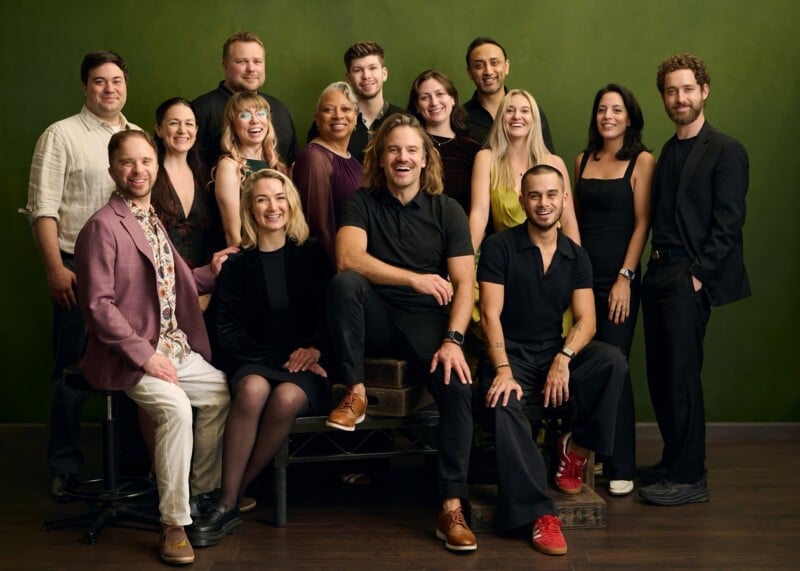
This remarkable efficiency under pressure showcases the team’s synergy. Kunze credits this collaborative spirit as key to the project’s decade-long success. “Creativity isn’t meant to only happen in a bubble,” he says. “It’s critical to have a collaborative team for large, complicated projects such as this. Not only does the team help make the process run smoothly, but they also suggest great ideas for poses and ways to use the Explorers props. Having a talented creative team is critical for me to achieve my creative vision.”
Evolving Exploration: Kunze’s Lens on a Decade of Change
Looking back over a decade of documenting The Explorers Club Annual Dinner, Kunze says he has become more inspired each year. “It is one of my favorite projects of my career,” he states. Kunze’s unique vantage point has allowed him to observe the constant evolution of exploration. “I have seen a significant and positive shift within The Explorers Club over the last ten years. They’ve moved into the 21st century with their use of media, and they have various initiatives that highlight the lesser-known voices, which is reflected in who we are photographing.”

He points to programs like The Explorers Club 50, showcasing under-the-radar individuals, The Explorer Cubs Program, aimed at inspiring children to explore, and The Society of Forgotten Explorers, which posthumously recognizes figures like Tenzing Norgay, who was alongside Sir Edmund Hillary as they became the first people to summit Mt. Everest. However, his contributions were historically less celebrated. Norgay’s story, among others, is showcased in Explorers Club member Josh Gates’ show, Tales From the Explorers Club on Discovery. “In every expedition, in every field, there are often people who are not acknowledged,” Kunze states. “The Society aims to shine a light on them. Maybe the most rewarding aspect of this project is that my portraits help spread awareness of the accomplishments of these Explorer Club members who might not be as well known.”
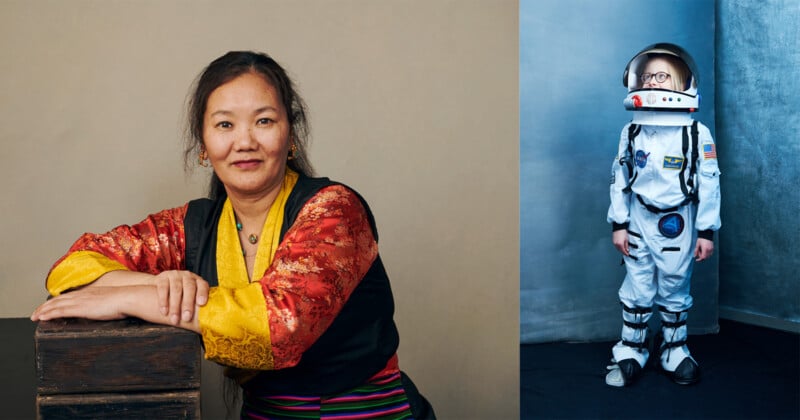

Throughout this evolving landscape, Kunze has intentionally maintained the consistent, timeless aesthetic of his portrait series, believing its strength lies in maintaining this vision, allowing the subjects and their achievements to remain the central focus. “The consistency of doing these portraits once a year keeps me fresh,” he says. “My Explorers Club project helps me get back to the basics of letting the subject tell the story, while not relying on elaborate scenes or locations.” This dedication ensures each year’s images connect cohesively, building a unified body of work.

The demanding ECAD environment has also honed Kunze’s skills. “I feel like I’m better at it now than I was 10 years ago,” he shares. His commitment to the project remains strong. “As long as I have the gas in the tank, I’ll keep doing it,” Kunze affirms. “The project is a way for me to stay connected to a community that I admire, and I am inspired to continue telling the stories of those who push the boundaries of human knowledge and exploration.”
The Enduring Spirit of the Explorer, Through Kunze’s Photos
After a decade photographing the remarkable individuals of The Explorers Club, Kunze says that the project’s personal rewards extend far beyond the images.
“I consider it a gift to be embraced by a community of people that are pushing society forward,” he says. “I’m endlessly interested and curious about the people involved and the work that they do. Photography, for me, is a tool to meet people and engage in conversation that goes beyond small talk. It’s my way of looking at the world and understanding it better through photographing people. When I photograph someone, I consider them my friend, and I want to know more of their story.”
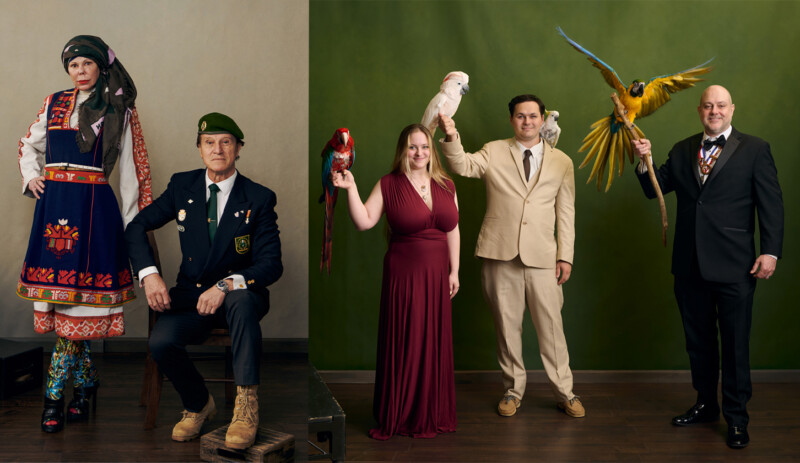
Kunze finds that the inherent challenge is what inspires his commitment to this demanding, self-funded endeavor.
“I really enjoy harnessing the focus and determination that I need to have to pull this chaotic shoot off, year after year,” he explains. “That challenge keeps me interested in the project, and makes me eager to learn the stories that The Explorers Club members continue to tell. I think interest and curiosity are important to my life, and especially my work as a creative. If I am not interested and curious in my subject’s stories, what’s the point of telling them? It is incredibly rewarding to be connected to something bigger than myself and I value the creative control this personal project affords me to honor explorers in my own distinct way.”
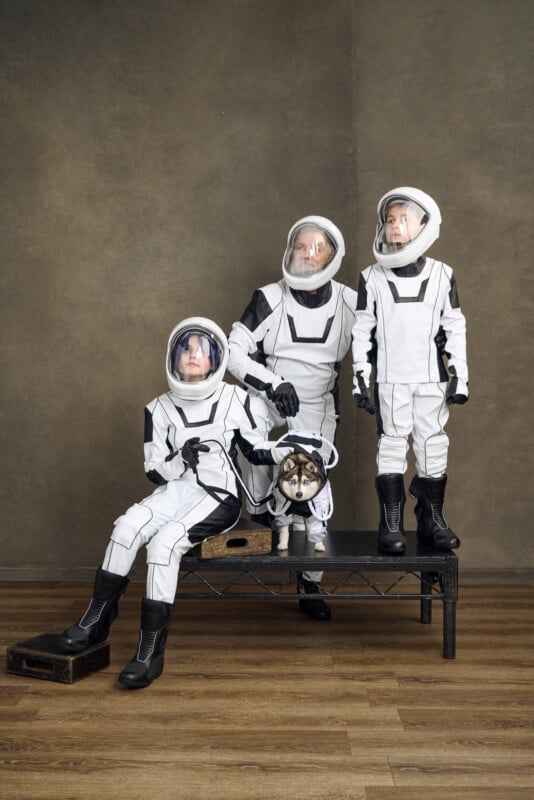
For photographers inspired to create their own long-term personal projects, Kunze’s journey offers a simple yet profound piece of wisdom.
“Find a community you believe in and serve it with your unique vision,” he concludes. “My decade documenting the incredible members of The Explorers Club is a testament to how passion can do more than create a dynamic portfolio; it can forge connections, celebrate human achievement, and perhaps even inspire the next generation of explorers. I don’t want to just capture portraits, I want to chronicle the enduring, ever-evolving spirit of human curiosity and our relentless drive to discover, and be just a small part of helping to pass these important stories down to future generations.”
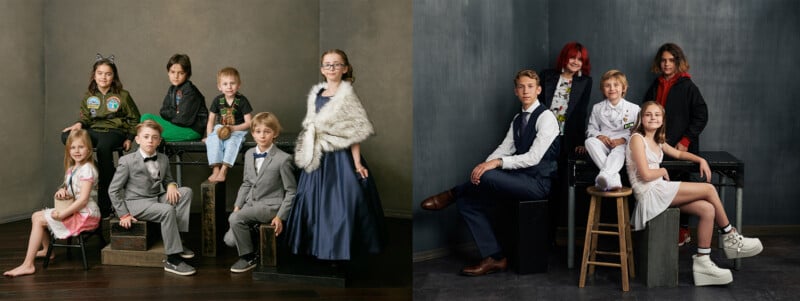
See more from Felix Kunze on his website, YouTube, and Instagram.
Image credits: All photos by Felix Kunze